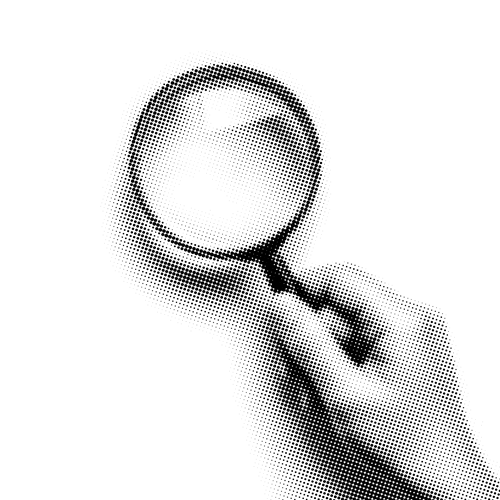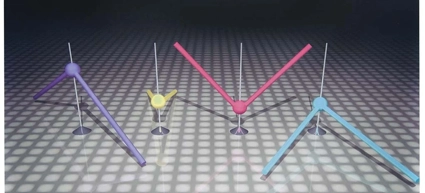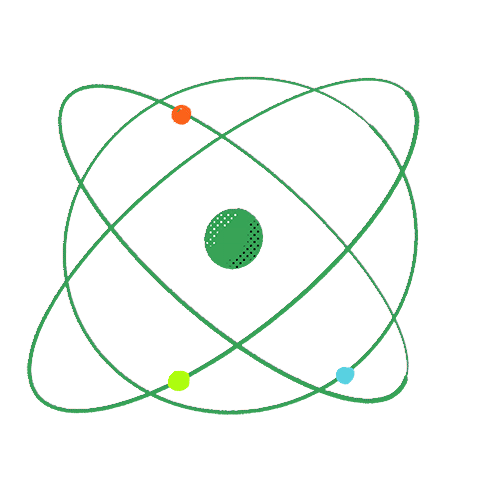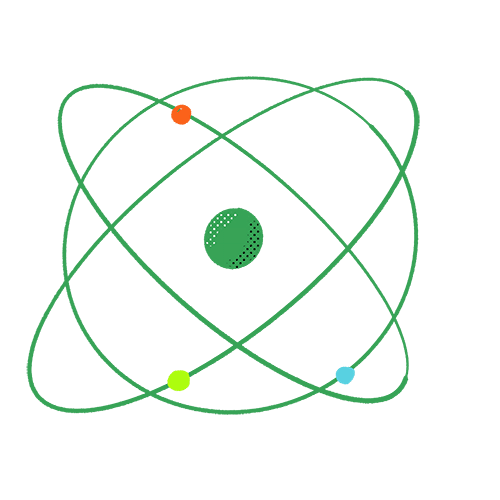
4-T
Welcome to the Puzzle Corner! Can you get all four T-pieces into one of the boxes? Hint: Not all the pieces need to be straight.

You learn new things when you're having fun. To experiment is to try things for yourself. At Tom Tits Experiment we invite you to do just that, in which ever order you like.




Welcome to the Puzzle Corner! Can you get all four T-pieces into one of the boxes? Hint: Not all the pieces need to be straight.


The angles at the corners where the rods meet appear to be either sharp or obtuse. But is that really true?


The angles at the corners where the rods meet appear to be either sharp or obtuse. But is that really true?


A cubic metre is a cube where each side is one metre. It can be filled with 1,000 litres of water, or it can be filled with people. How many can be squeezed in?


This picture looks like the night sky full of stars, but contains something completely different hidden in it. Try to focus behind the picture and see what appears!


Turn on the compressed air and see how easily the little cradle slides along the bar. But what happens when the air is turned off?


Usually, you need a microscope to study an animal cell. Here we have built a larger model! How does it differ from the plant cell?



Build a bridge and test to see whether it can bear your weight. The challenge can also be taken by a group. How many can the bridge hold? How can it be so stable?


Just give us a minute, or two, to finish Are you ready for a higher level? With the aid of a screw, it’s easy to transfer water up to a higher level. All you need to do is turn the screw!this page please!


The white arrows and black arrows point in opposite directions. What we see is influenced by what we choose to consider as background.



Let's do a virtual autopsy! On our visualisation screen, you can study what the body looks like on the inside of humans and animals.


The Backwards Clock tells the time, but it can be difficult to read it since the hands go backwards. What does time mean to you?




Try out this circus act in complete safety! Do you dare to cycle the complete length of the rope?


Why does the snot turn green when you are sick? What does a fart consist of? And if you start bleeding, what happens when the wound heals?


This model shows the vertebrae of the neck and the eight areas of the brain. It also shows the network of nerves and arteries.


You have probably seen when a baby gets food from its mother's breasts. But what happens to the breasts when a person is pregnant?


The experiment shows how people once used to make fire. But how can a magnifying glass and the sun cause the wood to burn?


Come inside and visit a camera. The hole in the wall acts as a lens and lets in the light. You can see on the opposite side of the camera how the image is formed, upside down.


Place your hands together such that the net is between your palms. Then slowly pull your hands gently along the net. Do you feel something unexpected?



Try lifting at different distances from the stone. What do you feel? What happens if you're closer or farther away?


We are part of the Earth’s closed system just as the microbes are part of the closed system in the glass container. They break down leaves to produce the building blocks for new plants. The plants produce oxygen, while the bacteria produce carbon dioxide.


What if everything we see follows a mathematical equation? The cochlea is just such a shape. We have built a sound-insulated room in the form of a cochlea containing several experiments.


When the pressure from the colliding water jets is equal, the water creates a bell. Adjust the preassure to change the size of the bell.


Test how well you see. The pictures consist of hundreds of small dots of different colours. People with normal sight can see numerals in the different pictures.


What would happen if your shadow, which is always grey, suddenly showed itself in colour? This experiment consists of three spotlights of different colours.


This experiment is like a kaleidoscope! The liquid organises itself into complex and beautiful patterns when it is heated, instead of becoming more disorganised.


Slowly spin the fountain and look at the trajectories of the water jets. The water in the pipes rotate around the centre. The further from the centre the water gets, the faster it rotates. The water coming out of the inward-facing pipes has a greater rotation speed than the water coming out of the shorter pipes. This means that the water jet going inwards will go with the direction of rotation. This is known as the Coriolis effect.
The same thing happens in a 400-metre dash. When the runners are next to each other in the curve, and the runner on the outside track manages to keep up with the one on the inside track, maintain their speed and then switch to the inside track, they will be able to outrun the others in the race.
The French scientist Coriolis studied this phenomenon in the 1800s, when he noticed that air currents heading northwards always turn off to the east in the rotational direction of Earth.
To learn more, you can check out the experiment The Earth in a Bottle in the Water department.


Listen to the sounds and watch the lights in the plexiglass rods. When that happens they have been hit by tiny parts of disintegrating stars from outer space, which are falling on us all the time.


These models are the skulls of our ancestors. They are from archaeological finds from prehistoric people, those who came before us.


Crawl through one of the large pipes used in drainage systems. This one is 35 m long, and it’s not used to transport water. Are you up to it?


Did you know that the skin is our largest organ? It protects the body from harm and from drying out. And it can change colour – when we are embarrassed for example.


The experiment is closed due to remodelling.
When you go to the cinema, the film is projected onto a large screen. Here, the pictures are shown on a screen of microscopic water droplets. Are they big enough to make you wet?


How does the kitchen equipment lie in the drawer? Our experience of the items changes depending on whether we choose to see black or white as the pictures background.


Between the black squares, which form a sort of network in the image, black dots appear among the lighter circles where the white lines meet.


A death mask is a cast of a person's face that is made after they have died, to preserve the memory of the deceased.


In this experiment you can experience various sight defects. These spectacles give an impression of having a cataract or cloudy lens.


What happens inside the body after you eat? Learn all about the digestive system and what nutrients the body absorbs from food.


What is your eye colour? Regardless of which it is determined by your DNA, which carries your genes.


This is a David and Goliath scenario using pieces of wood. The small piece can bring down the big one. All it needs is to get them in the right order.


Can you detect the direction of motion? Crank the handle to set the experiment in rotation. Look at the two attached spirals. Are they moving? Look carefully at the two metal rings hanging on the spirals. Are they moving?



Set the pendulums in motion by pushing them with your hands and then releasing them. The speed and movement of the pendulums determine the pattern they make.


The drop down is temporarily closed for maintenance.
Do you want to experience zero gravity?


Do you want to feel what it’s like in an earthquake? Stand on the simulator and choose your earthquake.


The bicycle is connected to a generator that converts the energy of motion (kinetic energy) from pedalling to electrical energy. How fast can you get the lights to flash? Pedal and test yourself!


Are there different types of forest? These trees make up what is known as "energy forest", which is the term used to denote a forest grown specifically for purposes of energy. How do you think we get energy from the trees when they are grown?


The lines and irregularities are used to make a two-dimensional image appear three-dimensional.


In Experimenta, we have added a layer of computer games over the top of our experiments. Try it out and collect points together!


We have a dominant eye just as we may be right-handed or left-handed. Each eye sees its own image of the world. Which world do you see?


Look through the windows in this door. Can you read what is written on the window on the other side of the door? The material used here is the same as that used in polaroid sunglasses.


Let's get hooked! Hook your finger inside the loop and pull it towards you. How strong are you?


Have you heard of fingerprints, the patterns in the skin at the tips of our fingers? No-one has the same fingerprints as you, but what are they for?


You shouldn’t believe all the stories you hear about the one that got away, but can you believe what you see with your own eyes? We learn how to interpret images. Maybe it’s the same with the stories we hear?


Have you heard that you can float in the Dead Sea? This is a lake with a very high salt content. The salt content of the bottles differ: can you say which one has the highest level?


All feet look different! One difference can be what the foot arches look like. Here, you can study three types of feet.


Have you ever seen your feet from below? Mirror your feet and examine how you stand! Are the loads equal? What happens when you stand on one leg?


The taste buds of the tongue allow us to feel different tastes when we eat. But what happens in the body when we separate sweet from salt? The model shows the tongue and its underlying muscles in cross section.


Walk around on the plate and the fountain sprays water in the same pattern. Pressure-sensitive sensors under the plate open valves that direct the water in the fountain.


Turn the disk through 180° and watch the neodymium magnets fall at different speeds. Why? And why does the magnet on the wooden rod fall freely?


Our amazing skull helps us not to lose face – literally! It supports the face and protects the brain.


Study how the foetus develops right up until birth. The models are partially "hands on", and can be investigated together.


The density of a liquid varies with the temperature. When the temperature of a liquid increases, its density decreases. The buoyancy of the liquid then increases.


There are micro-organisms everywhere. Did you know that there are ten times more micro-organisms than the number of cells in the human body?


Imagine that you want to wash your face, but are not allowed to put your hands into the water. Is it possible?


What happens inside the vagina when a woman is sexually aroused, and how does the menstrual cycle work?


What happens to the penis when a man is sexually aroused, and how many sperms are there in a teaspoon of sperm?


A geyser is a source that ejects hot water from the interior of the Earth. Our geyser is activated when you walk round it pushing the stick.


When the pipe is turned, the water wants to run out and the air makes its way up as small whirls are created at the sides of the ball. As the ball obstructs the pipe, only a small amount of water and air can pass each other at once. This is why the ball moves irregularly in the pipe.


An iron pipe in the ground enables us to investigate the ground water. This pipe has been driven down to a depth of 12 meters.


Sit on the stool and hold the bicycle wheel. Start it spinning, then try to turn its axle. What happens if you tip it over, what motion does the wheel take on?e!


We use our hands a lot. They can both handle tiny little things and grab big things. Therefore, the hand consists of many different parts.


Are you charged? Place one hand on the aluminium plate and the other hand on the copper plate and see what happens.


Squeeze the handle, using one hand. How strong are you? Is it possible to improve your results?


Sometimes you just want to hang out for a while! Grab hold of the pole and hang on for as long as you can. Can you improve your results?


Test your hearing with the audiometer! It measures a property known as the "hearing threshold", i.e. the lower limit that you can hear at a certain frequency.


Have a look inside the lungs! What happens when the oxygen you inhale is absorbed by the blood, and what does it feel to touch a lung?



The experiment is closed due to remodelling.
Which part of your body is warmest? It’s easy to feel whether one part is warmer than another if the difference is more than a few degrees.


You might be able to get our helicopter in the air, if you pedal really hard. The blades of the helicopter have the same shape as airplane wings. But how can you get a helicopter to fly?



Heron’s fountain is a water transportation system that is used as a fountain. Heron’s fountain was developed by the Greek engineer Heron, approximately 2,000 years ago.


Many dolls show the body with the wrong proportions. This doll however has a point to make; it showz how nerve cells are distributed over the body.


Two people are needed to do this experiment. Are you as good at getting out of a tight spot as the famous escapologist Houdini? Prove it!


The Hydraulic ram was known as early as the 18th century and uses only the energy of the falling water as its energy source. This means that its location is extremely important.


The I Ching is a hexagram in the ancient Chinese text of the same name. "I Ching" or Yi Jing means "Book of Changes". The book is an important work for the Taoism and Confucianism religions. The text has been around in its present form since 200 BCE, but may have been in use much longer.


What is art? Can anything be art? Reuterswärd created what we call “impossible figures” that make us question what we are seeing.


Art does not have to make a statement about the modern age, it can display paradoxal mathematical figures that show the conflict between surface and volume.


The artwork certainly gives meaning to the phrase a “flat organisation”. Why do you think that is? Hint: can the figures move between different levels or not?


What does it feel like to see into infinity? Maybe you get this feeling when looking at the night sky. Here, we create a never-ending corridor, but how?


The object of a Rorschach test is to show how we associate certain concepts and in this way draw conclusions about who we are. What can you see in the image?


Tilt the top panel a half turn. It tilts forwards ever other time and backwards every other time. Feel which way it is tilting right now. Release the panel.


How is your sight? This test uses a perfectly safe laser to determine whether you have deficient sight. Look at the dots with one eye at a time and see what happens!


What looks at first to be impossible may not be so. You will need both stubbornness and creativity to separate the heart from the shackle.


It is possible to switch one or several letters for numbers, and still get the message. But if you cover up parts of the letters, can you still read the sentence?


The long ball track illustrates several principles of physics such as acceleration, friction and energy conversion. And it might just get you sweating!


What would it feel like to be a little marble rolling along the track? Marbles that fall vertically fall at a high speed. The speed is reduced in the Marble Race. Which track is the faster?


Life is a maze. You have to get lost a few times before finding your way. Wander round our maze and make some wrong choices, before getting it right and escaping.


How tall are you? Is the value given in your passport correct? Have you grown since the last time you got measured?


Are you good at remembering things? No? Don't worry – research shows that it is a matter of practice!


This is weightlifting with a difference. Lift a block of volume 1 litre of a metal and feel that the weight difference between the metals. What is going on?


Have you got it right out to your fingertips? Close your eyes, use the joystick and use your fingertips to feel whether you can put the round metal disk into such a position that you no longer feel the edge.


Are you good at thinking about nothing? You can get the ball to roll to the other side of the table if you can produce the right sort of brain waves. The player who is most focused while remaining relaxed wins.


By mixing your features with somebody else’s, you can play with your identity. Who will you be with somebody else’s features?


Guiding the hand when what you see is a mirror image is harder than you might think. Try following the lines on the screen to form a simple shape.


Up close, you only see individual small mosaic tiles in different colors. It is easier to see what they depict if you squint, or back away a certain distance.


This experiment demonstrates music, programming, engineering and physics. Can you see all of these elements in the experiment, or are you happy just pumping water and making music?


Is the sculpture a depression or does it protrude? Light and darkness can be reinterpreted so that your brain sees it as a normal three-dimensional sculpture.


How will the marbles be distributed? Will they all end up in the same compartment every time you do the test?


How is snot made? Why do we have nose hair? And how can we smell different smells? The model shows our fantastic nose!


We all poop, but what do your turds really consist of? And what determines whether they are loose or hard?


Look into infinity. Look through the hole in the front wooden panel. Through the small holes in the opposing mirrors you see a long corridor that appears to be endless.


Pan for gold in the same way as out in nature. You're welcome to keep the gold that you find!


Some animals have extremely good hearing and can hear a whisper from far away. You can also do this, if you use the right equipment!


When the muscles of the pelvis have been removed it’s easy to see the size of the opening at the bottom. What is the difference between men and women?


You probably know how it feels when you really, really need to pee. What happens in the body when you get that feeling?


The magnetic figures can be moved around and placed at different locations. The background has been painted according to classic rules of perspective to create a feeling of depth.


The heads of the pins are similar to the pixels that form an image on a screen. Pressing you hand into the cushion forms a three-dimensional image.


The planetary orbit shows the motion of planets around the sun, using coins as models for the planets.


A plant cell is slightly more advanced than an animal cell – it has a higher number of organelles and is also larger.



Do you want to experience what it’s like to be seven months pregnant? Put on a pregnancy suit and see what it feels like!


The large tube filled with water has three holes. The pressure in the tube changes with height. The pressure is greatest at the bottom of the tube. How does the pressure affect the jets of water emitted?


You can see your surroundings in new colours with this experiment. Look through the prism. What colours does the world take on, and how is this possible?


Investigate how fast your pulse is beating, and how much oxygen there is in your blood. The amount is usually over 90 percent if you're healthy.


You need to be able to think in three dimensions to build a pyramid from the various rows of balls. They can be positioned anywhere in the pyramid.


Put your ear against the marked focal point. Can you hear the radio when the sound is captured by the other parabolic antenna?



What would we need to "make" a whole human being? All the ingredients of the human body are listed here – a recipe for a human!


Use your body to paint! With the aid of a video camera and a large reflecting wall you create an image that is processed in a computer. The result is projected onto a large screen.


Gently tap the reflex hammer on the knee-cap tendon just below the knee-cap. What happens?


When the direction of light is changed by lenses it occurs by a process known as refraction. Here, five laser beams are refracted in different ways.


Look carefully at the picture – would it be possible to make this cube? No, it is impossible to construct the figure in the drawing in reality.


Place your hands on two different stones. Do they feel different? A white object reflects heat while a black one absorbs it.


In our industrial robot Robocoaster, the gripper has been replaced by seats for two people. It gives you a ride 11 metres above the ground!


Can paintings move? It is possible to trick the eye using colours and shadows. The squares seem to roll like waves on the water surface!


When the container rotates the water is pushed out towards the sides and it builds a parabola or curve.


Challenge a friend! Who is best at consuming calories? Or try to determine how much work you have to do to burn of certain foods.


Ready, steady, run! How fast can you accelerate? Try running in different ways to improve your results.


The picture consists of two photographs of the same scene, taken with differently coloured filters. They have been displaced slightly relative to each other and the picture thus becomes fuzzy.


Sit down for a moment and listen, look and take it in. How does it feel? Does the feeling you have in your body change when the colours do?


Can you turn sand on a potter’s wheel? This experiment allows you to try. Pour sand onto the disk and start the motor.


Can you scream as loudly as an animal? The barrel has a microphone connected to an amplifier. The intensity of the sound produced is measured in decibels and displayed as a column of lamps.


The grey circles on the door appear different when compared with the background. But if you move the template around, you’ll realise that this is not so.


Two marbles race against each other with the starting blocks and finishing tape at the same place, but differing in the distance travelled and the gradient of the track. In the arc-shaped track the marble accelerates rapidly.


This is the same test as the one used by an optician. Stand 5 metres away from the test sheet, cover one eye and read with the other. How far down can you read?



How does a siphon work? You can see the mechanism in this experiment. What happens if you tilt the balance-board to one side or the other?


Why not try our fakir’s bed of nails? Why can we sit on many nails without hurting ourselves, while sitting on one nail is very painful?


The skeleton is is our innermost constructional element. Our rattling bones have historically been associated with death, but we couldn’t live without it!


Look up – and check out our skeleton chandelier! It is a replica of a real chandelier found in a church in the Czech village of Sedlec.


In this experiment, you can challenge yourself and your body! Do you have a good balance? Is it possible to improve your results? Can you keep your balance longer by using your body's position, strength, speed and stamina?


You might be familiar with the way a Slinky toy turns somersaults down stairs. We put our Slinkys on a treadmill. How fast can the Slinky travel?


When the powerful magnet is set in motion above the solid copper element, a magnetic field arises that is so strong that the magnet appears to hover.


The top of the pipe spreads water in all directions by using a narrow opening. The water’s surface tension makes the water stay together in the form of a thin film that creates a dome.



When water has been captured by soap, it can be stretched. This makes it possible to blow soap bubbles and make long webs. Create a soap bubble curtain by pulling the rope!


Do you want to stand inside a soap bubble? The ring here is so large that you can create a film of soap around you. But what do you need to be able to fly inside one?


Soap bubbles are magical. They are shiny, soft and contain all the colours of the rainbow. If you like soap bubbles, this is the place to be!


The Sounding Stones act as a xylophone. Use the hammer to hit one of the stones and listen.


Train like the Swedish astronauts Christer Fuglesang and Marcus Wandt! Space Ball was built to train astronauts to get used to spinning around without becoming nauseous. Can you manage it?


When a part of the body breaks, it can sometimes be replaced by a spare. The model shows some examples of prosthetics that can be surgically implanted.


When you pump water to the bucket, the result may not be what you expected. There are holes in the bucket. But these are pointing in different directions and this makes the bucket spin.


This experiment will trick you into seeing different colours, depending on the speed of the disk. Try it and see whether you see the same colours when it spins at different speeds.


Start rotating the disk. When does the pattern become indistinct, and when can you see it? Try what happens when the disk spins at different speeds.


It's not easy to follow the spiral lines and determine whether they change colour. The pink lines appear to change colour. Why?


The dolls houses appear the same, but there are at least five differences. You will have to use all of your senses to find them. How many senses do humans have?


Squeeze a bottle and smell its contents. If you can’t identify the smell, the answer is written under a little flap above each bottle.


This experiment uses the same technology as photography. For a few moments you can say hello to your shadow, before it slowly fades away.


This experiment is to challenge yourself and your body. How steady are your hands? How can you improve your result by using your body's position, your strength, speed and stamina?


How can this stone ball of spectrolite granite be so easy to spin, even though it is so heavy? The ball has a diameter of 60 cm and weighs 360 kg.


Tip the container backwards and forwards – what happens? You are experimenting with the surface tension of the water, one of several properties that make water a really cool liquid.


Can you get the colours to change sides by moving one peg at a time? The rules are that you must move one step and jump over a peg of the other colour.


Tangram is believed to be originally Chinese. Can you create letters, buildings or swans using the pieces?






Water is able to support a person and even a large ship. The strength, or ability of water to support weight, can be reduced by gas. For example, it’s more difficult to float in a whirlpool bathtub.


For us to be able to see anything at all, we need light. If the light visible is white, we can see all the colours of the rainbow.


What does the inside the human brain look like? In the "brain puzzle", you'll find the cerebrum, diencephalon, cerebellum, and the medulla oblongata.


The Centrifuge rotates at over 30 km/h. This causes a centrifugal force so great that you don’t need a floor to stand on – the force presses you against the wall.


Can you lift yourself? You can in this experiment. The experiment illustrates tensile forces and gravity forces. Come and give yourself a lift to a level you may have thought was impossible.


We often dive into things because we are curious. In order to dive into the sea, you must be able to control the gas inside the body and breathe under water.



It's easy to clone yourself here. All you need to do is look at yourself in the double mirror. What factors play role in lettning you see several images of yourself?


Art and science meet at Tom Tits, creating new solutions. This moving sculpture shows the way in which a drop falls onto a water surface.


Come inside the ear! Here you can get lost in the semicircular canals, play with bones that look like hammers, and study tissues that help you to balance.


Do you want to see how air streams and areas of low and high pressure move around the Earth? Spin the glass ball, which acts as a model for our planet.


Our eyes enable us to see the world, but how do they do that? Take the model apart to see the tissues that are involved.


A rope is wound around the three differently formed iron pipes. The idea of the experiment is to release the rope from the pipes. Then to wind the rope back around the pipes, the drawings on the sign can help you.


The bottle is a water barometer that predicts the weather by measuring the pressure of the atmosphere. High pressure often means nice weather, while low pressure means poorer weather.


In this experiment, you can challenge yourself and your body! How fast are your reflexes? Is it possible to improve your results? Can you react faster by using your body's position, strength, speed and stamina?


The spaces appear to have the same green colour but this is an illusion. One room is painted green and is illuminated with white light, which contains all wavelenghts.



The heart muscle is the size of a fist, and an incredibly efficient pump! It pumps around 300 litres of blood around your body every hour. That's around 2.7 million litres a year!



An impeller shaft contains paddles or blades. In this example, the water’s force helps create a vertical power to rotate the wheel.


A flat picture can sometimes give an impression of great depth. The drawing of the ring gives a realistic impression on paper, but this ring cannot be physically made.



This is an example of modern fibreoptics in which light passes through bent pipes. The colour is changed by a rotating colour filter in the projector.


A motion detector next to these lions’ heads switches on the water when somebody passes. Rather than you feeding the animals, they feed you with water!


Try our microscope and have a closer look on tiny little things. What does your pinky finger nail look like up close?


Sometimes you can choose the angle at which you look at things. Their appearance can change completely depending on the angle. You can test this phenomenon in this experiment.


Few things say "strength" as loudly as muscles. But can you be strong in other ways, even if you don't have large muscles?


The Pavilion of Light is not only an experiment: it’s also a work of art. It demonstrates how what we see is influenced by such factors as the colour of the light and the colour of the object.


Why do your pupils shrink in bright sunlight, and get bigger when you are in a dark room?


Put the two parts together to form a pyramid. Use the four corners of the pyramid to guide you to the solution.


In this experiment, a rainbow appears when the light from the sun is scattered by the water drops. If you are above the water drops, on a hill, for example, the rainbow you see is round.



What do we direct our attention to when reading text? Can you find a mistake in the text on the sign?


You see yourself in a mirror because it reflects light. A bent mirror reflects light towards a specific point. If you can find the point of focus, the image will be non-reversed. Can you find this point?


This is an experiment that requires collaboration. Can you find the equilibrium point of the plank or is it just fun to see-saw?


Just about everything here is rotating, both the disks and the table. Start a disk rotating, and try to control how it moves when the base is also rotating.


There is an object inside the box that you can feel with your hands. The person on the side facing the plexiglass can see the object and have the “answer”.


Siphons can be used to move water with help from differences in levels, water pressure and the earth’s pull.


The experiment is closed due to remodelling.
The turned urn has been created on a lathe, and can be rotated. The contours along its sides change slightly, due to irregularities in the rotating process.


A human being’s spine is more flexible in some places than in others. Where is it most flexible? Test the model and then on yourself!


Listen to the noises of the body with the stethoscope. The body gurgles, bubbles and pounds in a never-ending cacophony. Listen to your heart – what is it saying?


Stand in front of the fan and press the buttons. Choose the wind speed you want to fight against. Here, you can safely live through a hurricane.


Here you have to be able to think in new ways to position the parts such that they form the letter “T”. The solution may not be what you think.


Holograms are made by photographing objects from different angles with the aid of a laser. Holograms are now used on ID cards, for example, to make them more difficult to copy.


How many teeth do you have in your mouth, and how many more will you get? What does the tooth look like under the gums?


When visually impaired people read braille, the cerebral cortex is activated. This is the same part of the brain that is activated by images.


The Wave Wall is a model of the water's wave motions. Put it in motion and study how the water moves. Is it lateral, vertical or a circular motion?


You can see the effects of air when it’s windy outdoors and the air picks up leaves and debris. In order to make the tornado visible here, we have a humidifier in the floor that produces mist.


One bottle is filled with water. If you turn over the filled bottle at the top, there is a poor flow of water to the bottle below, or no flow at all. Why is that?


Are words enough? One of you is to describe how the shapes are positioned on the table using only words and guide the other into arranging the shapes in the same way.


This experiment is more challenging when conducted together with several other people. How far can you move the ball through the maze?


This is a different kind of puzzle – can you put all the organs in their right places? They have evolved such that they can be squeezed together while still having a very large surface area. Why is this?


This is a different kind of puzzle – can you put all the organs in their right places? They have evolved such that they can be squeezed together while still having a very large surface area. Why is this?


Spin the disk and look at it intently while it spins for at least 20 seconds. What happens if you then look at your palm?


Create music in our tubes! Hit the tubes and listen to the vibrations propagating through them. The length of a tube affects the pitch of the note it produces.


One, two, three – pull! Here, you can challenge yourself and your body. How strong are you? Is it possible to improve your results?


Sit on the stool, tilt the spinning wheel and examine how your body moves. Do you feel the difference if you stand on the rotating plate?


We have a skateboard ring with a difference on the second floor. But we call our skateboards “turtles”. Just imagine – you can sit down and ride a skateboard!


Twisting spiral produces different illusions depending on what direction you spin it.


Roll up your sleeve and have a closer look at your viens – the thin blood vessels that transport blood to the heart.


Try to throw the ball into the hole when you have the lens in front of your eyes. You may start to get the hang of it after a while: why do you think this is so?


Find your inner circus artist! Challenge your ability to balance and see if you can walk on a tight rope. Feel free to wobble!


Let a ball follow the flow of water in the channel, which has been built on different levels and flows into the large barrel.


Move the water-filled tube up and down across the text. The tube acts as a lens and turns what you see upside down. The same thing happens in a camera and in your eye.


How high can you fire the rocket? Try it and see! Pump as hard as you can to achieve a really high speed.


The water streams here are emitted as small "pieces" that all land on the same place. They look like small sausages of water.


Did you know that there are staircases for water? This simple design does many good things for water, just as we become healthier by running up and down stairs.


Water streams can be produced by twisting the water-filled glass plate quickly or slowly in various directions. The plate can be turned in all directions.


Potential energy is stored in the tower in the position of the water. Eight nozzles have been placed at various heights below the water level in the tower. What happens when the water flows out?


What is it like to move around without using your legs? What everyday obstacals do you encounter in the Wheelchair course?


This gives you a feel for the Wild West. The windvane is a variant on the ones seen in countless western films. It is a wind-operated pump that brings water from the well when it’s windy.


Our Wind tree is the first of its kind in the Nordic countries! A wind tree works just like a wind turbine but looks like a tree.


The picture is a photograph taken in San Francisco. You might think that there’s been an earthquake, since the house has ended up at an angle. What do you think?


This map shows where it is daytime and where it is night at the exact moment you are looking at the map. The rotation of the Earth moves the boundary between day and night.


Here you can see what different body parts look like in an X-ray picture. Can you find all the fractures?


Get in touch with your inner zombie! This experiment shows a model for the weight and consistency of the human brain. The bag contains a silicone mixture.


This large yoyo shows that a flywheel can store kinetic energy. Start the wheel rotating as if giving a push to a swing, and it can lift you as high as 4 meters above the ground!


A regular film shows 24 images/second. This gives the observer an impression of non-stop movement.




